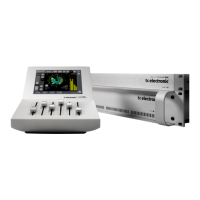53
paGe Head
IN DEPTH
53
paGe HeadrOOm sImulaTIOn fOr mulTICHannel musIC and fIlm
4 months, we will have more real life experience with the
system.
If integrated positioning is used with multi-source room
simulation, our experiments have already shown how much
WKHUHLVWRJDLQLQWHUPVRIUHDOLVPDQGZRUNLQJVSHHG%XW
even with the less radical additive approach, virtual rooms
may be rendered more convincingly with multi-source
simulators.
For applications where picture is added to the sound, the
most stimulating source will be one, where audio and video
are treated with equal attention to quality and detail.
The new possibilities available from multi-source room
processors may be exploited to generate a real quality
improvement at the end listener, especially when his
reproduction system is multichannel.
More convincing sound generates more convincing picture.
REFERENCES
[1] http://www.dat.dtu.dk/~odeon/
>@ 9LOOH3XONNL³9LUWXDO6RXQG6RXUFH3RVLWLRQLQJ8VLQJ
9HFWRU%DVH$PSOLWXGH3DQQLQJ´-$(69RO1R
pp. 456, 1997.
>@ -pU{PH'DQLHO-HDQ%HUQDUG5DXOW-HDQ'RPLQLTXH
Polack:
“Ambisonics Encoding of Other Audio Formats for
0XOWLSOH/LVWHQLQJ&RQGLWLRQV´$(63UHSULQWQR
1998.
[4] Küpfmüller, Karl: “Nachrichtenverarbeitung im
0HQVFKHQ´
University of Darmstadt, 1975.
Fig 1
Overall block diagram of Room Simulation Algorithm

